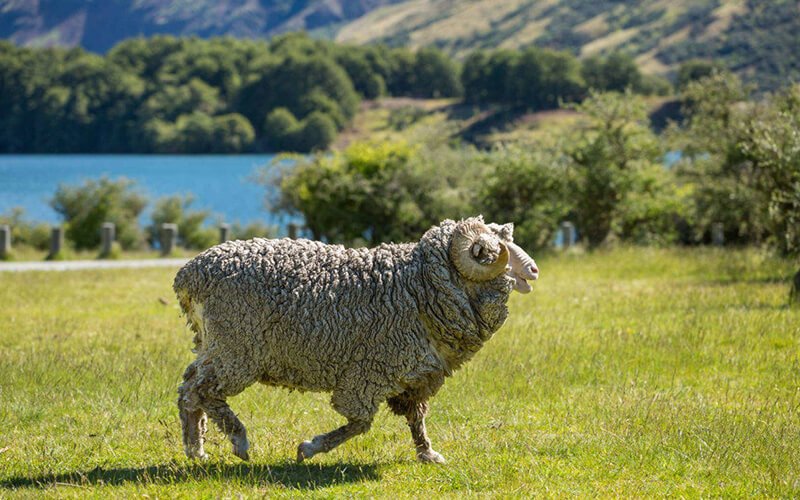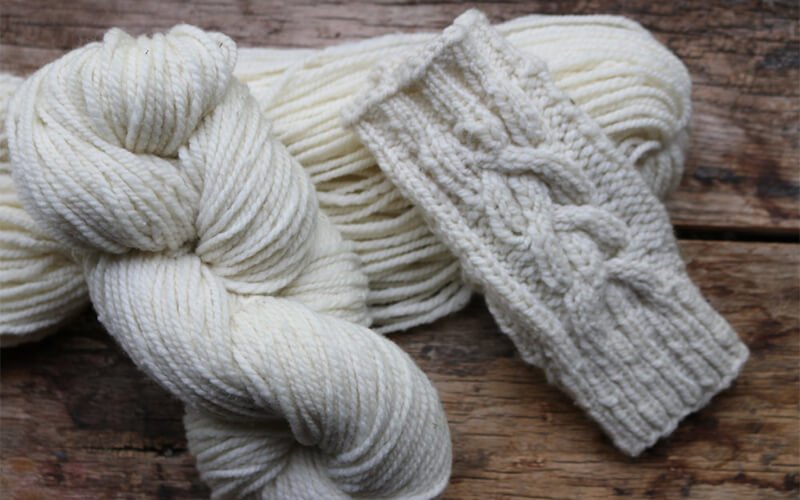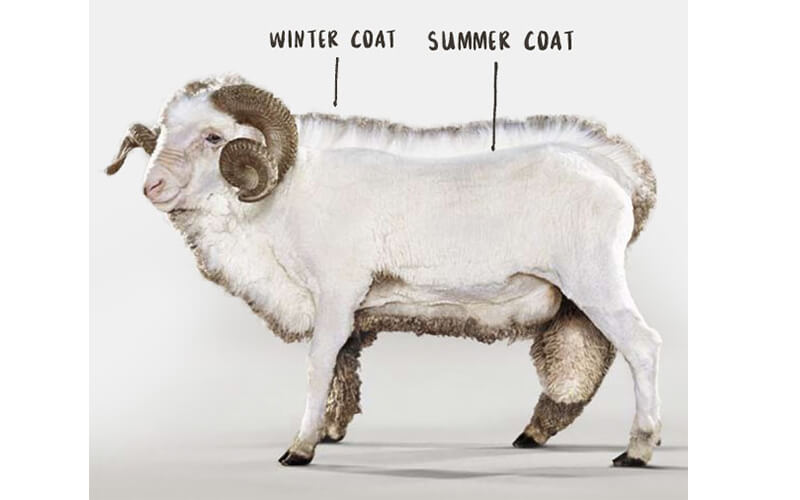The Merino sheep is an excellent breed of sheep and is a major breed of fine wool sheep. It is most famous in Australia and was introduced by McCarthur.

Merino Wool
About merino sheep
After the 18th century, Merino sheep were imported all over the world. Although Merino sheep are very adaptable, the differences in environment, feeding, and management have led to great differences in wool.
In Germany, the German Saarland Merino breed was bred, in France, the Lambrille breed was bred, and in Australia, the Australian Merino sheep breed was bred. In addition, South Africa, Argentina, Uruguay, the United States, and China have been introduced one after another.
As a world-renowned sheep breed, Merino sheep have a higher fleece yield than ordinary sheep, high wool density, and uniform fineness, white oil sweat, good color, soft, semi-circular bend, neat and consistent, the abdominal hair is a tuft of wool structure, the limbs are well covered with half hair.

Merino wool, the thinnest can be more than 80 counts, most in the range of 60-70 counts; wool filament length 4-10 cm, end flush, no pith in the fiber, positive cortical layer, and a secondary cortical layer or bilateral structure arranged side by side, forming a dense and uniform curl (4-10/cm).
Merino wool the surface of the fiber is covered with fine scales, and the oil content is high, and the net wool rate is lower than the general semi-fine wool and long wool.
Merino wool has excellent spinning performance, high count, soft and elastic hand, and is suitable for making excellent fine textiles. It also has good shrinkage and is an excellent raw material for rich and compact coarse fabrics.
Characteristics of Merino Wool

Merino Wool
Advantages.
1. Drape: Merino wool is finer and softer than other wools. Merino wool has a good drape and movement and is favored by many of the world’s leading designers and tailors.
2. Ductility: Merino wool’s fiber structure and slight curl make it a very flexible garment that can be washed or left flat for a period of time to recover on its own after wear.
3. Comfortable and breathable: Merino wool is extremely fine, with better suppleness and softness, and is able to absorb water vapor and evaporate it into the air, thus having good breathability.
4. Warm in winter and cool in summer: Merino wool is an active fiber that responds to changes in body temperature and has the characteristic of being warm in winter and cool in summer.
5. Odor elimination: Merino wool can absorb and lock the odor molecules in the skin sweat and moisture, and release and exclude them when the clothes are washed so that the clothes stay fresh for a long time.
6. UV protection and flame retardant: Merino wool has evolved natural UV protection as it adapts to the world’s harsh climate and has natural flame retardant properties.
Most merino wool products are treated with special shrinkage protection and can be machine washed without affecting the natural properties and advantages of wool.
Disadvantages.
Merino wool has the same disadvantages as most wools, such as pilling, shrinkage, felting, wrinkling, and deformation. However, these disadvantages are not as common as with wool in general.
The difference between merino wool and ordinary wool

Merino Wool
Australia has a nickname for the country on sheep’s backs, and half of that title comes from it – Merino sheep. Whether it’s the high rainfall eastern coast or the drier western countryside, Merino sheep are an iconic part of the Australian landscape. So what is the difference between Merino wool, which has always been known for its high quality, and ordinary wool?
First of all, Merino wool is also a type of wool, and like ordinary wool and cashmere, it is a natural protein fiber with natural warmth, breathability, and moisture absorption characteristics. However, compared to ordinary wool, the production of merino wool is relatively low, so it is also more expensive. However, unlike wool, Merino wool has thinner scales on the surface of the natural fiber, and the density of the scales covering the wool is smaller, so Merino wool will feel smoother, softer, and more delicate.
Secondly, merino wool is also more elastic, and the fabric is delicate, soft, thoughtful, and comfortable, making it more suitable for wearing close to the body. It is also very good at keeping warmth and moisture away from the skin and is used as a fabric for medium and high quality clothing. But ordinary wool is rougher to the touch, not as delicate, and can be prickly if worn close to the body.
In addition, merino wool, although the quality and feel of the wool are almost similar to cashmere products, the price is more advantageous compared to cashmere, which is the more cost-effective of all wool products. Most merino wool products are treated with a special anti-shrink treatment and can be machine washed directly. Machine washing does not affect the natural characteristics and benefits of wool, and proper care can be taken to maintain the garment’s good appearance. Ordinary wool may not have so many complex processes and is relatively easy to deform, pilling, etc.